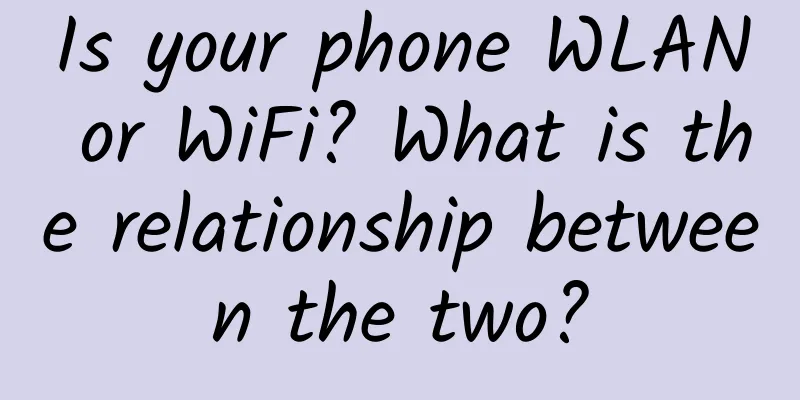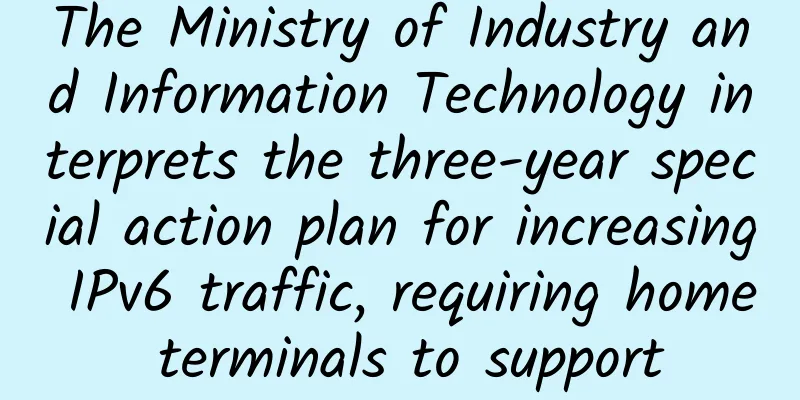Inventory of digital industry keywords in 2017

|
2017 will soon be a thing of the past, but there are many new trends in the digital industry that deserve attention. In this article, the author has found ten keywords to review the digital industry in 2017. Keyword 1: Mobile industry practice The past few years can be said to be a period of large-scale introduction of the concept of mobility, and mobile construction has gradually entered the informationization process of many organizations. In 2017, it can be clearly seen that mobile construction has gotten rid of the initial concept stage and entered the practice stage. More and more organizations have found that mobility is an inseparable part of informationization construction, and the introduction of mobile office processes plays a vital role in improving work efficiency. Therefore, many organizations currently consider mobility as an inevitable option when formulating their informationization strategies, and put forward specific indicators or modular requirements for the functional practices of the mobility platform.
Keyword 2: Mobile transformation and upgrading In the process of promoting mobility, the needs of industry users have also been continuously transformed and upgraded. In the past few years, the demand for mobility mainly emphasized the mandatory control of mobile devices, with less consideration of factors such as user privacy information, and no clear distinction between work needs and personal application needs. In the early mobile platforms, they were mainly used in organizations that are extremely sensitive to data security, such as finance and government, to ensure the security of their work-specific mobile devices. As the mobile scenario gradually matures, more and more organizations hope to include personal devices in the scope of mobile management and transform personal devices into productivity tools. This requires full consideration of the isolation of personal data and work data. The dual-system (work and life dual systems, which can be automatically switched) management method is also gaining favor with more and more organizations. Keyword 3: Unified Mobile Portal In 2017, mobility was gradually integrated into the overall informatization, and the previous phenomenon of separation gradually disappeared. More and more organizations require the creation of a unified mobile portal, which closely connects with the organization's existing IT system at the back end, realizes a unified work entrance through the single sign-on function at the front end, and can integrate the management of mobile applications. This not only makes it convenient for employees to access various types of applications such as OA, CRM, and attendance through a unified endpoint, improving work efficiency, but also objectively requires unified management, which is conducive to reducing the occurrence of data leaks and other incidents. Experts from Tus-NationInfo Enterprise Digitalization Research Center said: "Mobileization is a disruptive change to the existing IT architecture of organizations. Today, more and more organizations are beginning to comprehensively plan mobile technology roadmaps, carefully experimenting based on organizational scale and other factors to define the specific characteristics of business and technology and implement more mature mobile strategies. In this process, issues such as mobile integration management, security assurance, and application expansion will continue to emerge." Keyword 4: Cloud + Terminal From its inception in 2016 to its full expansion in 2017, the "cloud computing + terminal" (cloud + terminal) model has gradually become the information construction model preferred by many organizations. In fact, this is also based on the problems of current digital applications: mobile terminal applications are very convenient, but application distribution and data integration all rely on a strong cloud network to achieve. Mobile terminals that cannot access the cloud network are difficult to meet the needs of intelligence, and cannot form an overall terminal application system. At the same time, although cloud computing has advantages such as agility and flexibility, a large number of applications require terminals to be completed, and data still needs to be landed on the terminals. If there are hidden dangers in terminal security or unified management cannot be achieved, it may not only lead to accidents such as data leakage, but may also have a negative impact on the organization's production efficiency. Therefore, combining the agility of cloud computing with the application capabilities of terminals has become an inevitable development direction for future informatization. Under the "cloud + terminal" informatization model, cloud computing can realize centralized management of information resources, on-demand supply, "steward-style" personal services and sharing and co-creation, providing an environment for the entire information processing, resource collection and data computing, and realizing the transformation from "products to services" to "services to products"; the terminal takes over the computing power of the application edge, which can not only reduce the computing load of the cloud network center, but also provide a more real-time intelligent foundation, and through the unified security management of commercial applications, it can make greater contributions to digital transformation. Keyword 5: Digital platform Based on the concept of "cloud + terminal", Tus-Nation provides a "cloud + terminal" solution. Among them, the basic cloud is provided by the cloud platform TCP with high-performance and low-cost cloud computing resources; the application cloud is realized by the cloud application engine TAE to achieve efficient delivery and automatic operation and maintenance of cloud applications; the capability cloud delivers rich end-to-cloud business capabilities directly to customers. With the help of smart mobile device carriers, it helps users maximize these capabilities and realize their specific application value. In order to solve the network security problem, Tus-Guoxin Digital Platform provides support for upper-level applications through secure access. It realizes user single sign-on and permission control through unified identity management; and realizes the security of terminal device access, network transmission data and application access through the secure tunnel established by the secure access gateway. Organizations can push messages to mobile terminals through the cloud platform, or push information from the intranet. Mobile applications can access documents, emails and data on the intranet, and can access cloud resources and services. This mobile security feature can meet the scenarios of employee BYOD as well as the strong control requirements of industries such as government and the military. Keyword 6: Edge computing In 2017, the concept of "edge computing" became extremely popular, and many IT companies emphasized edge computing. Different from the delivery method based entirely on local or cloud computing, edge computing is close to the edge of the network where the object or data source is located. It integrates the open platform of network, computing, storage, and application core capabilities, provides edge intelligent services nearby, and meets the key needs of industry digitalization in terms of agile connection, real-time business, data optimization, application intelligence, security and privacy protection, etc. So, what is the relationship between edge computing and mobility? Simply put, mobile devices are one of the most important terminals for edge computing at this stage, and the computing power of mobile devices will also become an important source of edge computing. Compared with the pure cloud model, the delivery of business applications at the edge can not only significantly reduce the pressure on the cloud, but also achieve millisecond-level low latency and higher network bandwidth, which can ensure network transmission efficiency and stability, and is particularly suitable for business scenarios such as high-definition image processing, video surveillance, smart transportation, and smart homes. For example, in the bank lobby, edge computing can quickly and intelligently provide financial customers with delivery services such as web browsing, video viewing, and application downloads. Customers can get a better experience through their mobile phones, the service stickiness of financial institutions is greatly enhanced, and the pressure on the cloud will be significantly reduced. In the past few years, many IT vendors have radically proposed the concept of delivering applications entirely in the cloud. Although the concept is advanced, there are great obstacles in reality. The introduction of edge computing unifies the computing power of networked devices, which not only meets the needs of real-time business intelligence, but also provides a good landing model for the integrated application of mobility and cloud computing. However, from a practical perspective, organizations still need to focus on how to ensure the security, compliance, and availability of mobile applications and services, and strengthen the collaborative services of software and hardware, so as to lead the trend in the digital age and better enhance value. Keyword 7: Digital Economy The development of digital technology and the introduction of digital devices have enabled organizations to have more information tools, and the digital economy has been introduced and born. With the outbreak of a new round of information technology revolution, the manufacturing, consumption and other fields are undergoing a "digital transformation". A report shows that in 2016, the total scale of my country's digital economy reached 22.58 trillion yuan, and this figure will continue to rise at an alarming rate in the future. The digital economy is driving a new round of global change. In the new competitive landscape, the role of digitalization has been redefined, from technical support to a pioneer in leading change. IT managers not only need to think about how to use flexible and efficient information technology to promote organizational change, but also need to have the ability to lead organizational innovation and thus create new competitiveness. Recently, the Political Bureau of the CPC Central Committee held its second collective study on the implementation of the national big data strategy and proposed to build a digital economy with data as the key element and promote the integrated development of the real economy and the digital economy. The digital economy continues to create new possibilities, and the world has come to know a brand new China. Keyword 8: Agile business platform The rapid development of digitalization has led to an increasing complexity of IT. For IT departments, this means not only that IT systems have become bloated, but also that IT costs have increased rapidly. IT departments need to avoid lengthy project management cycles and seek more agile and lean digital capabilities. The deployment of agile business platforms can quickly change course and adapt to the pace of organizational business innovation. Experts from Tus-National Information Technology Research Center said: "To achieve digital transformation of enterprises, it means not only strengthening the connection between various links within the organization, but also connecting the upstream and downstream of the industrial chain, and based on this, conducting big data and intelligent operations, accelerating the realization of enterprise automation and real-time decision-making, thus forming a simple, efficient, and risk-controlled operation system, which requires organizations to establish an agile business platform." Specifically, agile business requires enterprises to continue to deepen their new data-driven thinking, establish internal and external connection, sharing, and collaboration mechanisms, unify all links on the digital platform, and more effectively collect, manage, analyze and utilize data during the application of the digital platform, and gain insights, predict risks, and seize business opportunities. Keyword 9: Information Process Reconstruction In the early days of organizational informatization, informatization processes were mainly based on PCs. As more and more employees began to use smart mobile devices to work, the reconstruction of informatization processes became more and more obvious. In 2017, there were obvious signs of change in the demand for mobility, which is the "tool nature" of enterprise mobility. Many government and enterprises not only use mobile platforms to manage mobile devices and mobile applications, but also use mobile platforms to integrate business, improve the efficiency of information dissemination and strengthen collaboration. In 2017, we can see that the popularity of mobile platforms with mobile collaboration functions has increased significantly. This includes not only Internet giants such as Alibaba and Tencent launching enterprise-level collaboration software for mobile collaboration needs, but also many organizations are promoting the integration and reconstruction of information processes internally. Among them, using mobile collaboration to break the time and space boundaries of work and strengthen remote management has become an obvious trend. Keyword 10: One-stop mobile collaboration In mobile collaboration platforms such as Tus-National Information's NQSky BeTalk, the platform reconstructs the entire work process in the form of discussion flow, solves the collaborative requirements of project communication and information synchronization within and outside the team, and realizes seamless chat, audio and video conferencing, file circulation and annotation distribution, coordination of work tasks, and team interaction anytime, anywhere without restrictions on devices and platforms. It supports functions such as conversations and discussion groups, document modification and annotation, audio and video conferencing, etc., and can centralize the many-to-one communication and management between many scattered applications into a unified and efficient collaboration solution, greatly simplifying the communication process and improving the team's collaboration efficiency. What is even more imaginative is that mobile collaboration platforms generally reserve interfaces for lightweight applications, which facilitates organizations to quickly expand their applications. In other words, OA, CRM, cloud disk and other applications can be made mobile through mobile collaboration platforms, and employees can quickly access organizational resources through wireless networks no matter where they are, which not only improves work efficiency, but also promotes the use of more fragmented time. Conclusion Overall, the digital concept in 2017 was more deeply integrated into the information structure of organizations, and its role in promoting productivity was also widely recognized. It is believed that in 2018, the digital industry will continue to develop rapidly and become an important driving force for the digital transformation of government and enterprise organizations. |
<<: Five realistic predictions for enterprise IT in 2018
>>: Comparison of operating data in November: Which of the three major operators has better data?
Recommend
Number portability experience report: the process and risks are all revealed
This article has time and regional limitations. T...
How to realize LoRa networking without a gateway?
As a low-power wide area network communication te...
iWebFusion dedicated server 10% off from $44/month, 5 data centers including Aptum/Psychz in Los Angeles are available
iWebFusion (iWFHosting) recently released a 10% d...
From DoH to ODoH, operators can no longer hijack DNS
Not long ago, 360, which has always held high the...
Borei Data APM is compatible with Euler open source operating system to ensure developers' performance experience
On November 9, at the Operating System Industry S...
Following FPA and Karaoke Room, Agora released a series of new products including CDN live streaming to expand the boundaries of RTE products
On October 22, the RTE2021 Real-time Internet Con...
Broadband as a Service: The End of DDoS?
【51CTO.com Quick Translation】With the continuous ...
RepriseHosting: Seattle servers starting from $22.45/month, free double memory, with IPMI, support Alipay
RepriseHosting is a long-established American bus...
Game lag? Be careful to use the wrong WiFi frequency at home
When you use WiFi at home to play games, you alwa...
Viewpoint sharing: Why smart cities need powerful 5G networks?
While debate rages about when and how to restart ...
Li-Fi, which failed to beat WiFi, may be the savior of 5G
Regarding the technical solutions for future comm...
CDN price war aside, P2P regains attention. Who is the driving force behind this?
Without talking about the price wars that have re...
DYXnet brings AI+ cloud network security services to Beijing Animation Week 2024 to support the innovative development of the animation industry
The development of the animation industry is of g...
How much do you know about intelligent edge?
What is the Intelligent Edge? The so-called intel...
After working for more than 6 years, I still don’t understand the principles and techniques of coroutines
[[432311]] Preface Hello, my friends! Dabai has w...

![[Black Friday] TNAHosting: $12/year KVM-1GB/15G SSD/5TB/Chicago](/upload/images/67cac00a526fb.webp)







